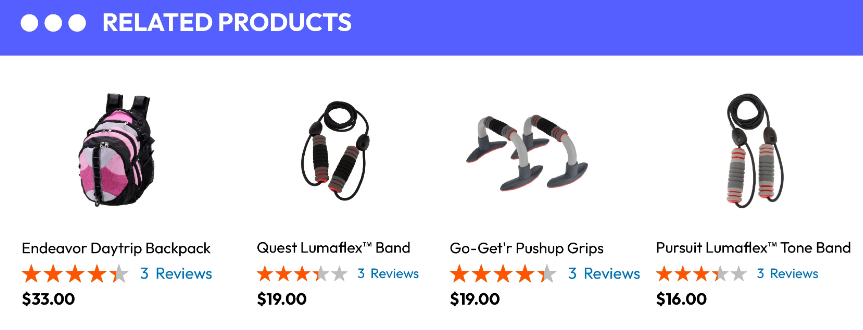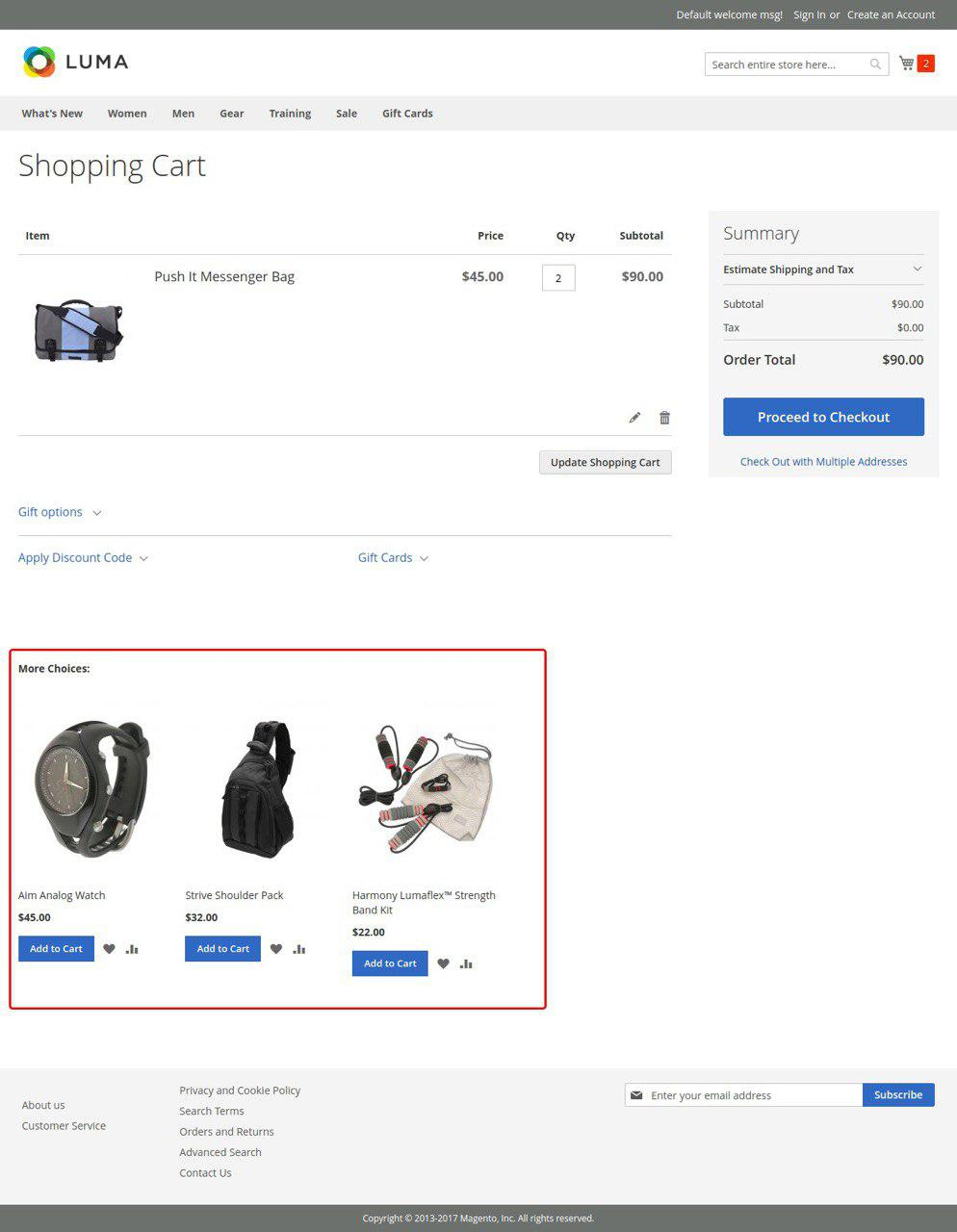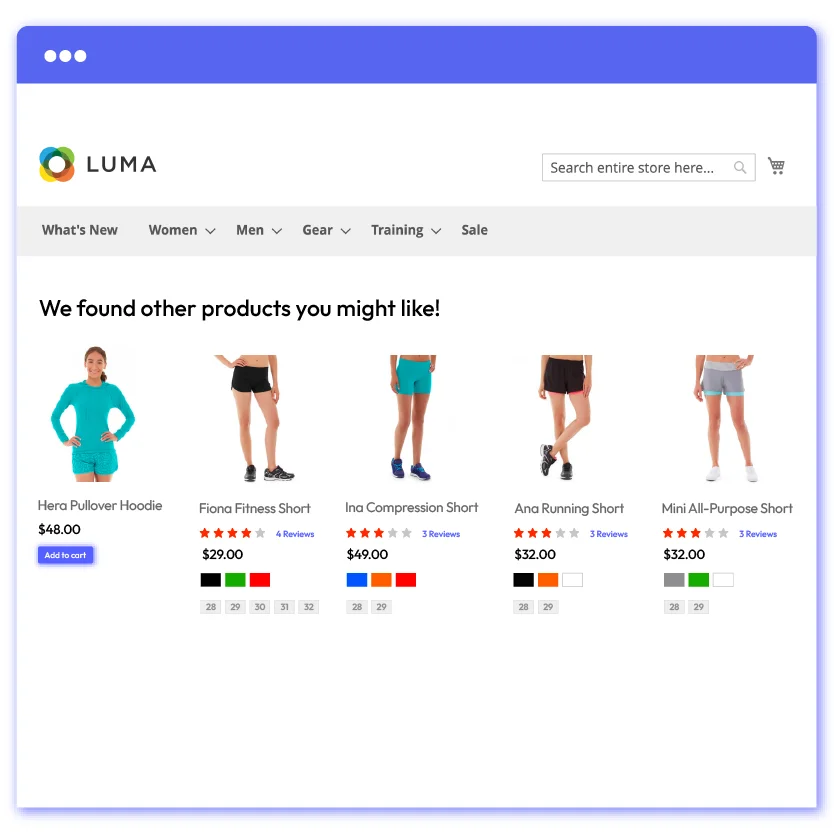The Differences Between Cross-Sells, Up-Sells and Related Products in Magento
Summer Nguyen | 03-17-2025

Overview of Cross-Sells, Up-Sells and Related Products in Magento
There are many ways used by online merchants to increase sales for their businesses. Among popular marketing tools used, related products, up-Sells, and cross-Sells seem to be the most effective and favorable by store admins. Cross-sells, up-sells, and related products are three marketing tools generated based on the relationship between the main products and others. In this post, let’s figure out how these marketing tools differentiate from each other.
Related Posts:
- How to add and remove related products in Magento 2?
- Related Products in Magento 2: Some Drawbacks and Solutions
- Why Your Ecommerce Needs A Product Recommendation Engine
Related products

In a Magento 2 store, related products are additional items displayed on a product page that complement the product a customer is currently viewing. They’re meant to be relevant but not necessarily more expensive (up-sells) or completely different (cross-sells). For instance, if a customer is looking at a running shoe, related products might include socks, shoelaces, or running apparel.
This product recommendation is based on the products customers are searching for. The appearance of related product blocks is expected to increase the demand of buyers for other products. It means that shopping doers are expected to choose additional products besides what they want to buy at first. Therefore, the related items block is usually presented on the product information page. When using this recommendation tool, store owners hope to increase the number of items per order.
Up-sells

Up-selling in Magento 2 is a sales technique that aims to convince customers to purchase a higher-priced, upgraded version of the product they’re currently considering. It’s about offering something more premium or feature-rich that enhances the value proposition.
Here’s how Up-sells work in Magento 2:
-
Placement: Up-sell products are typically displayed on the product page of the item the customer is viewing.
-
Product selection: Up-sells are usually similar products to the one being viewed but boast better features, higher quality, or more functionality. They often come at a higher price point.
For example, if a customer is looking at a basic smartphone, you might offer a higher-end model from the same brand with a better camera, more storage, or a faster processor as an up-sell.
Up-sells recommendation method is generated with the purpose of persuading a customer to buy another product instead of the item that he intends to purchase in the first place. Up-sells are often more expensive and better in quality, and so on. The underlying purpose of this recommendation method is to higher the value per order. In other words, store owners want their customers to spend more money on another product of the type.
Similar to related products, the upsell block is often arranged to be on the same page of product information page. Therefore, when web browsers are viewing their desired products, they can easily catch a glance at same kind of products which are higher in price and better in quality.
Cross-sells

In Magento 2, cross-selling is a sales strategy that involves recommending complementary or accessory products to the one a customer is currently viewing. Unlike up-sells, which focus on a higher-tier version of the same product, cross-sells target different items that enhance the use or experience of the main product.
It provides a list of product in both main product page and in the shopping cart page. However, it is preferably to be placed in the shopping cart page with the intention to persuade consumers to have decision on impulse to buy more products. This marketing strategy is remarkably identical to items presented at the cash registers in many stores and supermarkets. If you have been to some of these stores, you can easily catch a glimpse of a small stall with some goods presented. Because the owners believe that when people wait for the products to be charged, they have a tendency to impulsively buy unexpected products. If you want to add cross-sells block to increase your sales dramatically, click here to see full instructions.
The Differences Between Cross-Sells, Up-Sells, and Related Products in Magento 2
Here’s a comparison of Related Products, Up-sells, and Cross-sells in Magento 2:
| Feature | Related Products | Up-sells | Cross-sells |
|---|---|---|---|
| Goal | Increase average order value, enhance customer experience | Increase average order value, improve customer satisfaction | Increase average order value, improve customer experience |
| Product | Similar but not necessarily upgrades or add-ons | Higher-priced versions of the same product with more features or better quality | Complementary or accessory products that enhance the main product |
| Placement | Product page | Product page | Product page and shopping cart |
| Impact on Customer | Helps them find everything they need or complete a set | Offers a potentially better product that suits their needs more | Ensures they have everything to use the main product effectively |
| Magento Setup | Manual assignment or extensions | Manual assignment or extensions | Manual assignment or extensions |
Conclusion

In a nutshell, up-sells are all about pitching pricier upgrades of the product a customer is eyeing. Related products suggest similar items that complement the main product. On the other hand, cross-sells recommend entirely different but relevant accessories that enhance the use of the main product.
The key takeaway is to boost sales: all three strategies aim to increase the customer’s basket size, though in different ways.
In practice, these recommendations can be combined. Sometimes, up-sells and cross-sells might be subtly included within “related items.” Alternatively, stores can clearly label them for better transparency, like “Upgrade your purchase” for up-sells and “More to explore” for related/cross-sells. This labeled approach also helps track which suggestion types resonate more with customers.
Ultimately, how you present these recommendations is flexible. Popular options include “You might also like,” “Complete the set,” or “We recommend…”






